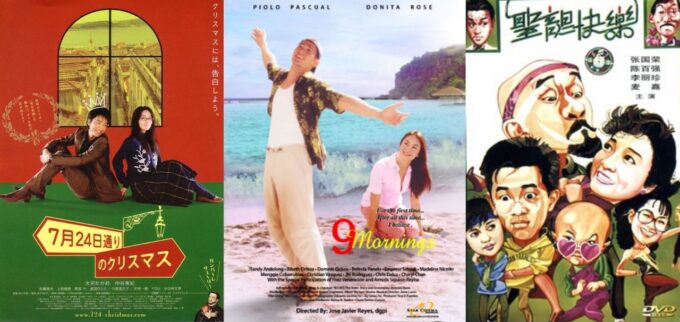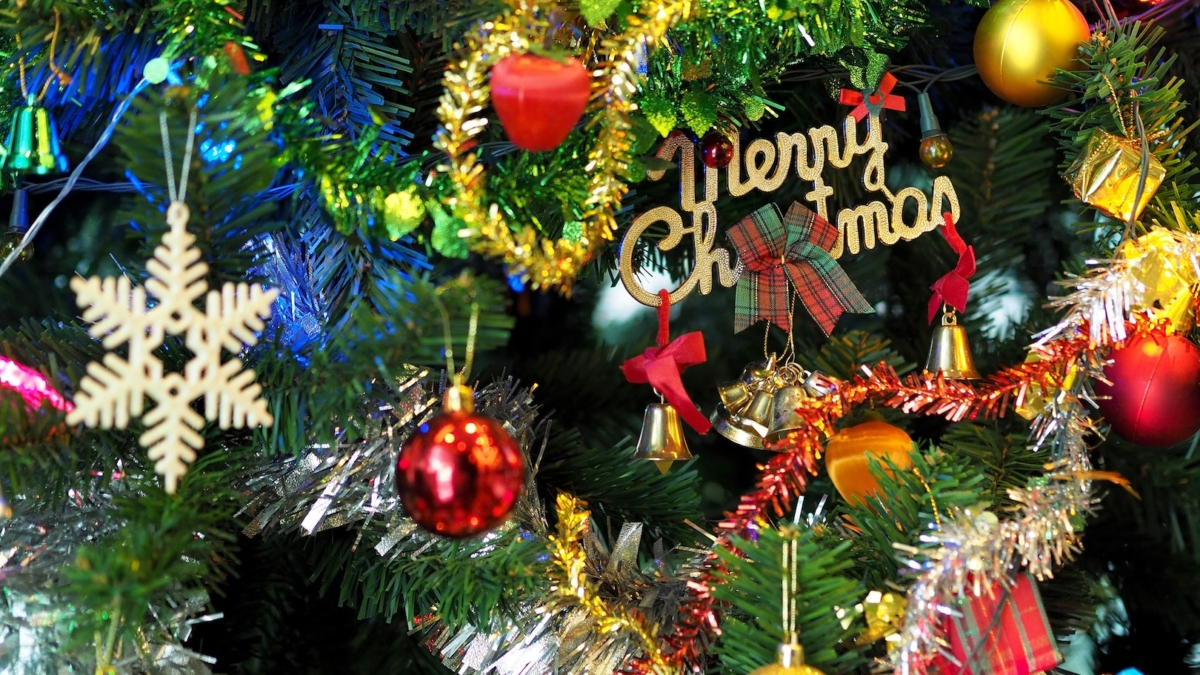Written By: Jeremy Lim
As the days get shorter and the nights get colder, it’s hard to ignore the big bully of a holiday that looms over everything from the moment Halloween is over. November, 2020 has housed an intense and often painstaking election, a Thanksgiving that arrives with a lot less fanfare than usual, and many anxieties regarding the future of the world. However, that doesn’t stop Christmas, the one holiday that manages to enthrall many parts of the world with its pomp, circumstance, magic and a little touch of commercialism as the red bow that ties it all together. Yes, as much as many dread hearing “Winter Wonderland” on repeat for months on end, Christmas is undoubtedly one of the most popular holidays. The holiday of Santa Claus and Yuletide joy is a monolith of a holiday, built on religious roots and filled to the brim with traditions. From the putting up of the tree to watching all of the classic Christmas films of years gone by, there is a certain sense of stability associated with December 25th and that holiday season in general. The more things change, the more things stay the same.
However, if you shift your focus over to the Eastern part of the world, you can see that Christmas enters a gray area, an area that isn’t so set in its ways. A great compact and concentrated way to see this cultural difference is through film and Christmas films are no different.
As October faded away, instead of prepping for Thanksgiving, the strange middle-child of end of year holidays, I sat down and consumed as many Asian Christmas films as I possibly could. Japanese Christmas films, Korean Christmas films, Filipino Christmas films, Chinese Christmas films, you name it; I tracked it down and watched it. After hours upon hours of Christmas miracles and winter love stories, something became abundantly clear: Foreign Christmas films can tell you a lot about a country’s culture and its relationship with the western world.

In their most similar states, Christmas films of the west and Christmas films of the east are fairly similar. Many movies deal with family bonding, burgeoning romantic relationships, the idea of having “Christmas joy,” and many other themes that I’m sure we’re all familiar with. All of these films are a rehashing of the same kinds of moral lessons that society has deemed relevant to the holiday season, and that includes the more commercial aspects of Christmas. In “Christmas on July 24th Avenue,” a Japanese film from 2006, Christmas as we know it in the west is basically functioning at full swing. Red and green is everywhere, there are presents and wrapping paper galore, and the food being eaten by the characters in this film line up with a traditional Christmas dinner of a big bird and sides aplenty. But, these traditions and symbols associated with a traditional western Christmas didn’t just make it to Asia by accident. These values were ported over by countries like England and the United States at one point or another. For example, even though Christmas had been recorded as having been celebrated in Japan as early as 1552, the first big boom of Christmas in that country didn’t really occur until the Meiji Restoration, when western influence turned the holiday into a nationwide celebration.
However, that doesn’t mean these Asian Christmas films line up perfectly with Christmas as we know it in the west; that’s far from the truth. In fact, as interesting as it is to think about all of the similarities being showcased and how that happened, it’s just as interesting to see what certain countries and cultures did to tweak Christmas to their liking and taste.
For example in “9 Mornings,” a 2002 Filipino film, in order for the main character to inherit his grandmother’s money, he has to complete “Simbang Gabi” or nine Christmas dawn masses. Even though Simbang Gabi originated in the 1600s during the Spanish rule of the Philippines, this tradition is very important and meaningful for many Filipinos. Not only is this tradition a way for many to celebrate family and togetherness, it’s also a moment when their faith can be strengthened and confirmed. For a nation that is overwhelmingly Catholic, a tradition like this is vital to their holiday season.
Another example comes from “Merry Christmas,” a Hong Kong film from 1984. In this film, the color red is used predominantly throughout the film, with the traditional green taking a major backseat. This could probably be chalked up to the fact that red is seen as an extremely lucky color in Chinese culture. So when Christmas was ported over, red was a natural gravitation point for the people in that culture.
Little details like this are sprinkled throughout all of these Asian Christmas films and it can open the eyes of viewers that are not so familiar with these countries. Demystification and the breaking of the idea that Asian Americans are some kind of “other” in this country is massively important. There are stories to be told from this community and these films can be used as a window to look through for people that aren’t familiar with this world.
After diving headfirst into the world of Christmas over in Asia, I became curious about Asian Americans and their foray into the world of Christmas cinema. After some gritty researching and intense googling, I was pretty disappointed by what I found.
“A Very Harold and Kumar Christmas” and “Last Christmas” were what I came up with in terms of Asian American Christmas movies, and, let’s be honest, that’s a real stretch. Harold and Kumar as a franchise is a fairly popular one in the realm of teen movie franchises with more of an edge to it, and should be given a lot of credit for having two Asian American actors as their leading men. However, “A Very Harold and Kumar Christmas” has as much to do with Christmas as “Die Hard” does. “Last Christmas” has everything to do with Christmas and has great Asian representation with Henry Golding and Michelle Yeoh, it just isn’t Asian American. Golding is a British Asian, Michelle Yeoh is Malaysian, the whole movie is set in London, the film is written by British women and directed by a white American man. So close.
Taking away those two films, I’ve reached the conclusion that there are zero (0) Asian American Christmas movies that, at the very least, are readily available to watch. This, to me, is ridiculous. Christmas films not only fill your heart and soul with a warm, fuzzy feeling but also provide a look into different cultures from your own. After asking many Asian American friends of different cultures and creeds, it becomes easy to see that Asian Americans have established many varied traditions around this hallowed holiday.
Many Chinese Americans skip the more traditional holiday ham or other big bird in favor of hotpot, with fish balls and beef aplenty. Some Filipino Americans have adjusted their sacred Christmas traditions to fit in with American culture a little more. Instead of starting their Christmas prep as early as September as many do in the Philippines, some have deliberately moved back their decorating to a more western-friendly time, hovering around November. Some Japanese Americans have moved away from KFC on Christmas, a tradition that stemmed from KFC marketing themselves as a Christmas food in 1974, in favor of standard Japanese fare.
There is so much variation to be had when it comes to how Asian families celebrate Christmas in America and that’s due to the fact that even though Christmas has become a wildly popular and financially successful holiday in many countries in Asia, that hasn’t always been the case. For many immigrants, as a way of assimilating, Christmas has become essential to celebrate in America. However, standard western Christmas traditions were very much an afterthought. These celebrations, although still festive and filled with “holiday spirit,” end up all over the place because a lot of Asian families aren’t beholden to any long standing Christmas traditions. That’s where this new potpourri style of Christmas celebration comes from, and it’s incredibly interesting to hear about how the different Asian cultures in America have interpreted the holiday.
Asian American Christmas isn’t a brand-new, made from scratch experience. Like many things in the world, Christmas celebrations in Asian American families have been about mixing together bits and pieces from all sorts of places. Some families don’t have trees because they don’t see the point. Some families celebrate Christmas and the New Year at the same time as a matter of convenience. Some families have deviated from that good ol’ fashioned home cooked family meal to arrive at a more potluck style dinner of their own culture’s food. The importance comes from what peoples and cultures decide to do with Christmas’ “normal” traditions as their base — their blank canvas.
The research I did into Asian American Christmas films left me feeling some doom and gloom but there is some hope.
“Dash & Lily,” a Netflix original series that premiered this month, centers around a biracial Asian American family and their experience with Christmas. Dash is an absolute Christmas Scrooge while Lily is bursting with Christmas spirit. This isn’t exactly a film but, hey, beggars can’t be choosers. Baby steps.
In regards to the world of film, having been announced in September 2020, Lifetime is planning to release “A Sugar and Spice Holiday” on December 13th. The film revolves around an Asian American family as they all get together for Christmas. The family runs a local lobster bar and ends up entering the town’s gingerbread house contest. The main character, Suzi, will use what she has learned from her grandmother and the family’s Chinese heritage to help win the competition.
This is exactly what I’m talking about. This movie is not reinventing the wheel. In fact, since it’s a Lifetime production, it’s probably going to be rather formulaic. But, that’s not the point. The point is that, with Hollywood churning out the same Christmas movie over and over again, why not give one of them any kind of redeeming quality? Even if “A Sugar and Spice Holiday” is just your average Christmas flick churning out the same story of familial love, at least audiences will get the opportunity to take a peek into a culture that they know little about, and as of right now, I’ll take that.

